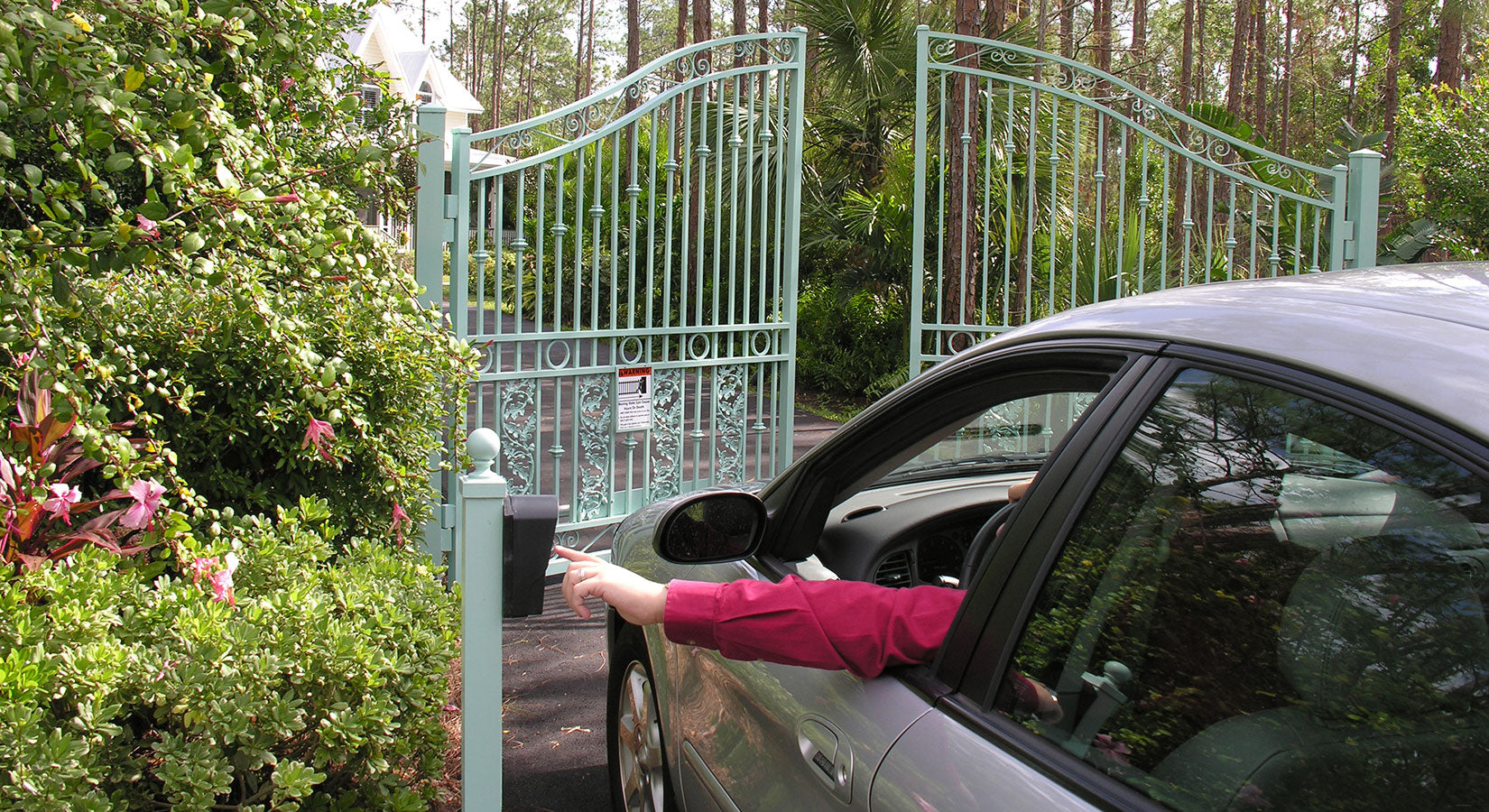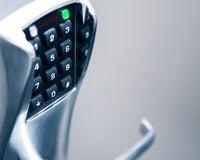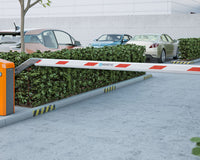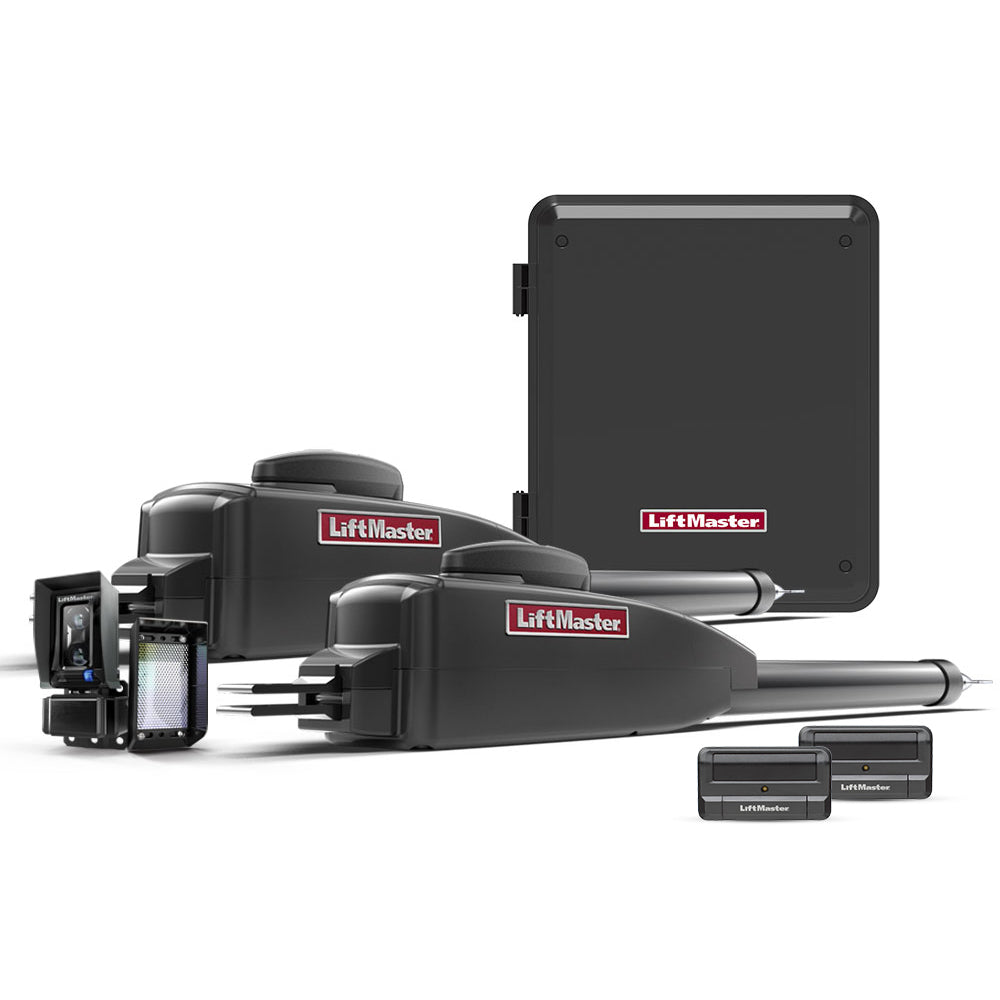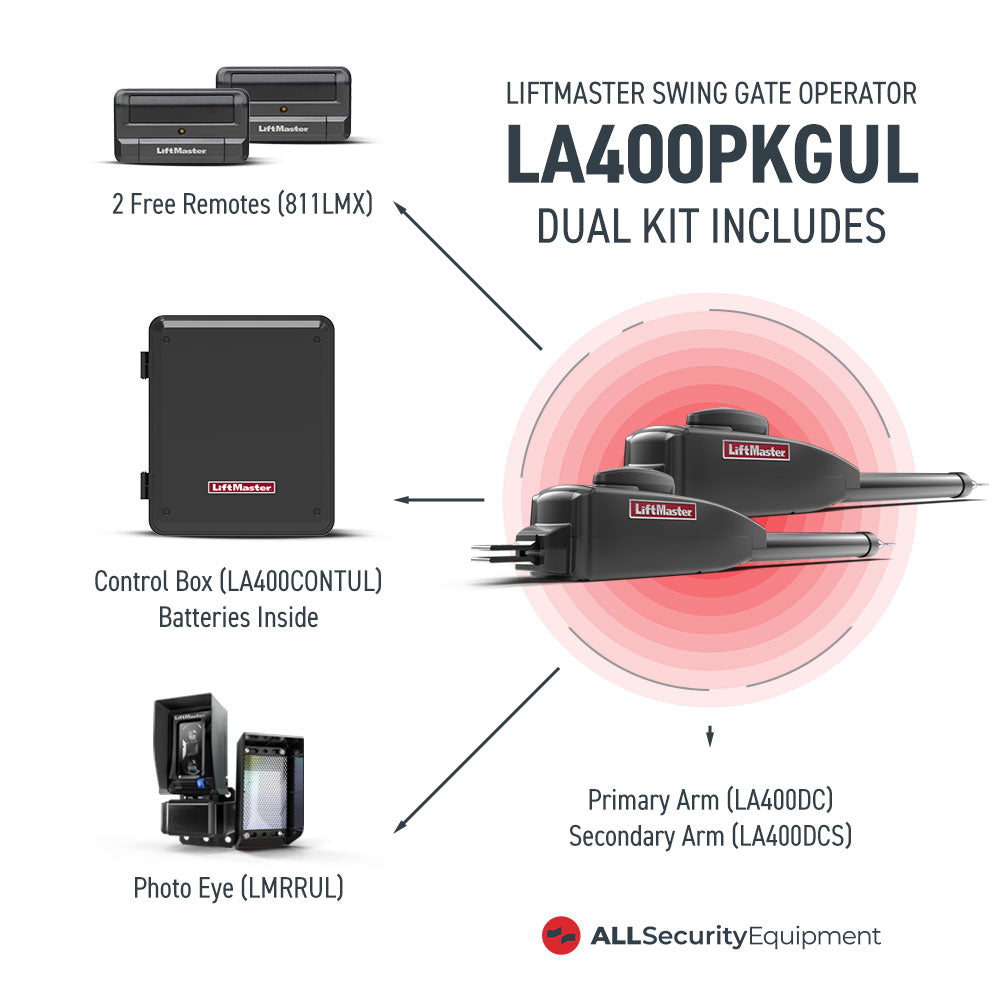What Are Vehicle Access Systems?
Vehicle access systems are designed to provide secure, controlled access for vehicles at an entrance. The system will typically consist of a barrier arm that can be raised and lowered across the entrance with a control panel usually located on one side. These systems may include scanner devices that read barcodes, cards, fingerprints, RFID tags, etc., in order to open the barrier arm automatically. Typically, vehicle access systems are used in very high traffic areas such as airports, Drive-Thrus, military installations, shopping malls, amusement parks, and other places where large numbers of people need to enter at once.
Types of Vehicle Access Systems
RFID
RFID stands for Radio Frequency Identification Device, a non-contact wireless system that uses radiofrequency waves to track and identify people or objects. An RFID access system uses electromagnetic fields to automatically identify and track the vehicle. The system uses a microchip with a tag (antenna), a reader, and the access control server. The RFID access system cross-references the data in the tag installed in the vehicle with the information in its database and allows access if the information matches.
RFID is considered an open access system because it does not require any sort of key or card to gain entry. With older gate vehicle access systems, there were many problems that arose from keys being copied or employees losing their key cards. These types of problems do not exist with an RFID system because each person receives a unique tag that cannot be duplicated. The motorist just needs to have their tag read as they drive through the gate, which allows them access into the facility without any key or card.
Advantages of RFID
- Increase efficiency and save time since the system scans the tag and grants access from a distance, thus eliminating congestion.
- The RFID tags on systems like LiftMaster LMSC1000 RFID Long Range Reader break on removal thus are secure. The tags are not easy to misuse, duplicate or steal.
- RFID tags are resilient to extreme weather conditions.
- Easy to use and install.
Disadvantages of RFID
- Data privacy and security concerns.
- RFID tags are affected by EMI caused by nearby metal objects, affecting tag function and readability.
- The internal clock mechanism in RFID tags has a limited life span - typically 1 to 10 years. The internal batteries supply power to the clock, and once the battery runs out, it is difficult and expensive to replace them.
- It is an expensive installation option. It can cost up to 200% more than the next closest alternative (the card/key) because of the extensive infrastructure required.
UHF (A Popular RFID Option)
Ultra-High Frequency refers to RFID frequencies ranging between 300 MHz-3 GHz.UHF systems work exclusively within those frequencies. The reader relays the unique number on the tag to the access control system, determining whether the vehicle should be granted access. UHF devices like AVI-9945466 uPass Reach UHF Long Range Reader reads tags from a longer distance. They are suitable for use in gated communities, car parks, and employee parking.
Advantages of UHF
- Reliable, long read range when installed correctly.
- Unlimited number of codes can be programmed into the access point.
Disadvantages of UHF
- They are prone to RF Interference (RFI).
- UHF does not support encryption on the tags.
- UHF systems require line-of-site. This means that if there are any obstructions between where the transmitter and receiver are located, such as trees, concrete columns, or partitions, the signal will be blocked.
ANPR
ANPR uses optical character recognition on images to read vehicle registration plates. The cameras use infrared technology, allowing them to work both day and night. As the car passes under the camera, the system runs an algorithm to identify and recognize the vehicle's number plate by matching it to a database of numbers. This database is typically created by connecting all cameras at different locations to one central computer that records and maps information as cars drive past.
This system acts as a gate access control and time attendance system for sliding and swing gates at controlled entrances and exits of car parks, warehousing, and parking facilities.
Advantages of ANPR
- Provide an efficient and cost-effective method of managing a parking lot or garage.
- ANPR can also reduce manual labor costs by the reduction of staff required to process vehicle data.
- They have higher accuracy compared to human operators - human eyes might get fatigued with repetitive tasks resulting in inaccurate data entry or, worse, accidents due to reading number plates at high speed.
- ANPR can be helpful, especially in cases where some sort of payment needs to be made before entering the gate, e.g., pay-to-park facilities or toll roads where number plates are recorded and fees charged after exiting the property.
- ANPR can also serve as an enforcement tool if required - i.e., tracking all vehicles entering a particular area under investigation without any vehicle passing through unmanned automated gates (e.g., police investigation at a crime scene).
Disadvantages of ANPR
- Since the system is not human, it cannot factor in human behavior and thus recommend wrong actions.
- Impacts on privacy because number plate data is stored in a database for future reference.
- Inability to operate in poor visibility conditions such as bad weather, darkness, or fog means that additional lighting might be required for certain types of installations where number plates need to be read reliably all year round regardless of environmental factors.
- Lack of flexibility due to reliance on number plates and the fact that ANPR systems might not work with certain types of non-standard number plates.
- Maintenance costs are higher compared to RFID systems.
Remote Control Transmitters
Remote control transmitters provide wireless access to an entry point. Remote control transmitters allow people access with their own key fob/transponder devices. With just the press of a button on the remote receiver, the transmitter authorizes the gate’s opening. Remote control devices like the ASE HomeLink Compatible Wireless Gate Access Kit | FAS-TS-LRHL2KP-KIT offer a long reading range and are programmable.
The most common use of this technology is at the entrance and exit of parking facilities where the customer has their own fob and uses this to access and exit a parking facility. This technology can also be used for people who will not use the same vehicle every time, so using transponder devices ensures they can open/close the gate without needing to find someone else with a key.
Advantages of Remote Control Transmitters
- They are easy to manage, thus convenient to use.
- Only people with the remote can access the entrance point.
- Remote control transmitters also afford less power consumption than other technologies, making them ideal for battery-operated readers or tags.
- They are low-cost, making them ideal for most companies that are just getting into the RFID game, as they're affordable and ready out-of-the-box.
Disadvantages of Remote Control Transmitters
- The reading range can be limiting.
- Jamming devices can easily disable it.
Digital Access Control Keypads
A Digital Access Control Keypad is a small device that can be used to allow entry or exit of a building. The keypads use the same technology as digital door locks and require users to enter an access code before opening doors or gates. This is useful for buildings with several people who need to gain entry at different times, as each person can have their own unique PIN code, which they must input before gaining access.
Some keyless systems such as the FAAC 4G Cellular Intercom With Live Streaming | FAA-4401 comes with full streaming capability, set automatic opening and closing times for the gate, infrared light for night use, and can be operated using a mobile app.
Advantages of Digital Access Control Keypads
- Eliminates the need to use keys, thus eliminating the risk posed by theft, duplication of keys, breakage, or loss of keys.
- In areas with multiple entries due to many employees or family members, you eliminate the need for many keys to access the premises.
- Ease Of Use - Security Entry keypads are designed to be extremely easy to use. By requiring users to enter in a PIN or scan an ID card, the system makes access quick and simple for authorized individuals while making it difficult for unauthorized individuals to gain access.
- Audit Trail - An audit trail provides a record of who entered what code and when. This is especially helpful if you suspect that someone has gained unauthorized access. It will allow you to determine precisely when and by which route the intruder entered your facility so you know exactly where to focus your investigation efforts.
- Compact design: One of the great benefits of the keyless entry system is its size. It can easily fit on your wall without taking up too much space or looking out of place.
Disadvantages of Digital Access Control Keypads
- Forgetting the passcode translates to denial of access to the property.
- The keypads can be hacked and its code taken over to gain unauthorized access.
Card Access Systems and Proximity Access Cards
Proximity cards, also known as prox cards, provide contactless access to a gate or door. The proximity cards work through radio frequency identification technology which allows the access control system to read the card when it’s within the specified range. The card has a metallic antenna coil inside that has encoded data.
Proximity cards are similar to key fobs or credit cards. They contain electronic circuits encoded with information to act as identification at specific areas, usually secured facilities. Proximity Access Cards work similarly to Card Access Systems, except that instead of inserting a card into a reader, the user simply needs to go near the device’s area for the reader to let them in. This is more convenient than a normal access card as users do not have to take anything out of their pocket and simply swipe the card past a sensor.
Advantages of Card Access Systems
- They are easy to implement even in places with a lot of traffic.
- Touchless technology makes them effective as people don’t have to queue to insert a card.
- Access cards can be used over a longer period of time. As such, it is easier to justify the initial cost when investing in these types of security measures is being made.
- Accountability - Since proximity access cards will only open the gate if it recognizes the individual carrying them, one can easily audit individuals that accessed the premises.
Disadvantages of Card Access Systems
- They pose security risks as the backend can be hacked. Additionally, the storage of data on the card makes it a security threat if it falls in the hands of a malicious hacker.
- They tend to have a shorter reading range.
- If your proximity access card malfunctions or stops working altogether, you will have difficulty getting into the premises.
Telephone Entry Systems
A telephone entry system works by pressing a button at the gate, which then alerts the attendant or person of a request to enter. The person on the other end communicates verbally with the visitor at the entrance and allows entry by pressing a button on their end.
Advantages of Telephone Entry Systems
- Enhances security because the person inside has to authorize the entry.
- It’s convenient since the person on the premises doesn’t have to physically go open the gate.
- The system easily integrates with other existing security measures, e.g., Security Cameras.
- It increases the value of property due to the security it provides as well as the optics.
- A telephone entry system is straightforward for residents and visitors alike to operate, as instructions on operating the system can be given through a pre-recorded message.
Disadvantages of Telephone Entry Systems
- If phone lines or power are cut, then any telephone entry systems attached to them will become inoperative until restored.
- Entrance depends on the physical presence of someone inside; thus can sometimes be inconvenient if you move to another section of the house.
- Interference or jamming of the system can cause inconveniences.
- Costly Installation - The installation costs for telephone entry systems might outweigh its benefits in some instances when compared to other forms of entry access control like biometric devices.
Fingerprint Readers
Fingerprint readers are intended to be used in cases where the user may not have a key, key fob, or proximity card to unlock an entry system. They identify people by their fingerprints, so they do not require any other object for use. Fingerprints are recorded using the devices associated with these systems and checked every time the user attempts to gain access.
Advantages of Fingerprint Readers
- Provides high-security levels as the person physically needs to use their finger. Further, it eliminates the risk of hacking to get the passcode. Fingerprints are unique to people--no one else in the world has exactly the same fingerprints as you do.
- A fingerprint reader eliminates the need to carry ID cards. This decreases the chance of losing one's credentials since it is not necessary for individuals to carry multiple forms of identification.
- Biometric technology is fast and accurate authentication compared to other methods available today. It also provides accuracy levels that cannot be compromised.
- It reduces operating expenses since it eliminates the need for issuing cards or maintaining registers of transactions included in other methods.
- The speed at which some systems can take the biometric data is much faster than manually typing in a password. This takes up less time for customers when entering high-security areas.
- Using the technology is becoming more affordable, making it easier for businesses to invest in biometrics.
Disadvantages of Fingerprint Readers
- Limits the entry of people who have suffered physical injuries such as burns.
- In certain cases, it might be difficult to obtain a complete and accurate fingerprint image due to age or profession.
- The technology is less accurate in the scanning of wet or messy fingers.
- There are health risks associated with the use of a single scanning sensor device by numerous people. This has significant consequences in epidemic circumstances, such as COVID-19 and others.
- Limits remote access.
Conclusion
Vehicle access systems are important because they help you enhance security at your property or facility and also provide a sense of order at the gate. There are several access control systems applicable for both commercial and residential use. The choice of a vehicle access system depends on several factors, including size of the property, security sensitivity, number of people accessing the premises, and financial capability.
High-risk security areas like sensitive research facilities and some restricted military areas would work best with fingerprint readers. RFID systems and proximity cards are a good choice for commercial areas with permanent employees as their vehicles can be fitted with RFID tags. This would provide easy identification and reduce congestion of vehicles as they enter the property.
Ultimately, each situation requires individual assessment to determine the most suitable vehicle access system. Contact our team of experts to find the perfect solution for you.

